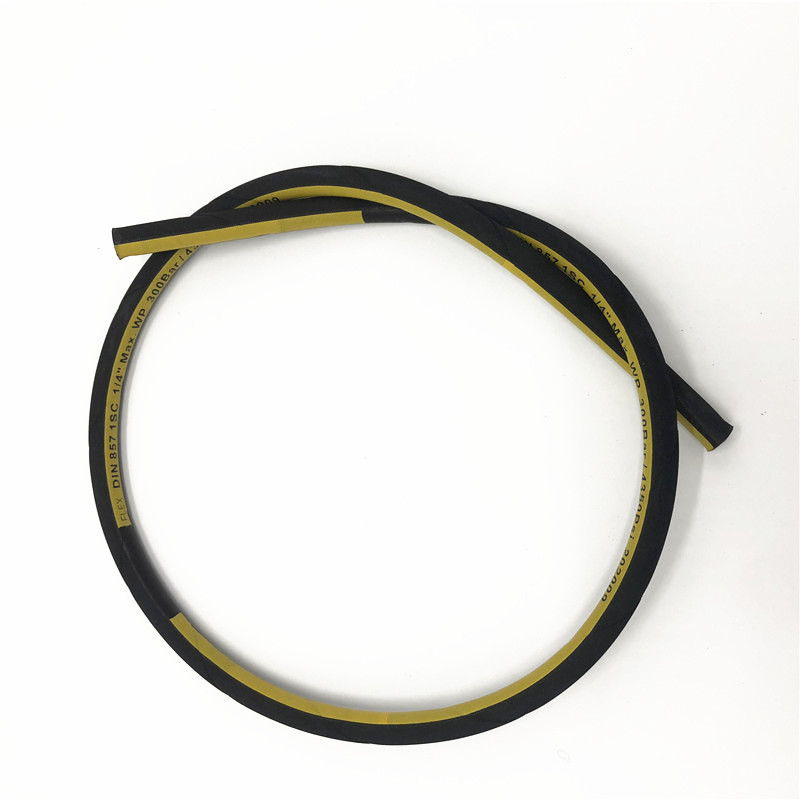335345435
Aug . 06, 2024 13:48 Back to list
Guidelines for Selecting EN857 1SC Hydraulic Hoses for Optimal Performance and Safety in Applications
Understanding OEM EN857 1SC A Comprehensive Overview
The EN857 1SC standard plays a crucial role in the hydraulic hose industry, particularly in OEM (Original Equipment Manufacturer) applications. This standard defines the specifications, performance requirements, and testing methods for wire-reinforced hydraulic hoses, ensuring their reliability and efficiency in various industrial settings. In this article, we will explore the key features, applications, and benefits of the EN857 1SC hoses, highlighting their importance in today’s mechanized world.
What is EN857 1SC?
EN857 1SC is a European standard that specifies the construction and performance requirements for a type of high-pressure hydraulic hose. It is designed to operate under extreme conditions, providing the necessary flexibility and durability required in hydraulic systems. The 1 indicates that it is a single-wire braid construction, while SC refers to its specific construction type, which includes features such as a rubber inner tube, a textile reinforcement layer, and a rubber outer cover.
These hoses are typically designed to handle operating pressures up to 140 bar (2030 psi) and can function effectively in temperatures ranging from -40°C to +100°C. This wide temperature range, along with its robust construction, makes EN857 1SC hoses suitable for various hydraulic tasks across different industries, including construction, agriculture, mining, and manufacturing.
Key Features of EN857 1SC Hoses
1. High Flexibility The construction of EN857 1SC hoses allows for excellent flexibility, making them easy to install in tight spaces and reducing the risk of kinking during operation.
2. Reinforced Structure The single braid of steel wire reinforcement provides additional strength, enabling the hose to withstand high pressure and high burst pressure, ensuring safety and reliability.
3. Abrasion Resistance The rubber outer cover is designed to resist abrasion and wear, prolonging the life of the hose even in demanding environments.
4. Chemical Compatibility EN857 1SC hoses are compatible with various hydraulic fluids, ensuring versatility for different applications without compromising performance.
Applications of EN857 1SC Hoses
Due to their robust design and reliable performance, EN857 1SC hoses find application in a wide range of industries. Some of the common uses include
oem en857 1sc

- Construction Equipment Used in excavators, loaders, and other heavy machinery that require efficient hydraulic systems to operate.
- Agricultural Machinery Ideal for tractors, harvesters, and other farming equipment where hydraulic systems are essential for operations such as lifting and steering.
- Mining Operations Suitable for providing hydraulic power in drilling and mining equipment, where durability under extreme conditions is critical.
- Manufacturing Processes Employed in various manufacturing processes that utilize hydraulic power for machinery and material handling.
Benefits of Choosing EN857 1SC Hoses
Choosing hoses that comply with the EN857 1SC standard offers several advantages
1. Quality Assurance Compliance with this standard ensures that the hoses have undergone rigorous testing and meet the performance requirements, providing peace of mind for users.
2. Cost-Effectiveness The durability and reliability of EN857 1SC hoses reduce maintenance costs and downtime, leading to improved overall efficiency in operations.
3. Safety The high-pressure rating and robust construction minimize the risk of hose failures, ensuring a safer working environment for operators.
4. Versatility These hoses can be used in a variety of applications, making them a versatile choice for companies looking to streamline their hydraulic systems.
In conclusion, OEM EN857 1SC hoses are vital components in hydraulic systems across various industries. Their high flexibility, reinforced structure, and wide range of applications make them an indispensable choice for professionals seeking reliability and performance. As industries continue to evolve, the importance of adhering to standards like EN857 1SC will only grow, ensuring safety and efficiency in all hydraulic operations.
-
SAE 100 R3 / EN854 R3 Hydraulic Hose | Medium Pressure & Flexible
NewsAug.11,2025
-
EN856 4SP Hydraulic Hose: High-Pressure & Durable Solutions
NewsAug.11,2025
-
Premium Soft Rubber Tubing: Flexible & Durable Hose Solutions
NewsAug.10,2025
-
Premium Distribution PTFE Hose | Flexible & Durable Solutions
NewsAug.09,2025
-
Premium 38mm Hydraulic Hose Factories | Direct & Reliable
NewsAug.08,2025
-
Premium Wire Braided Hydraulic Hose - Steel Reinforced for Durability
NewsAug.07,2025



